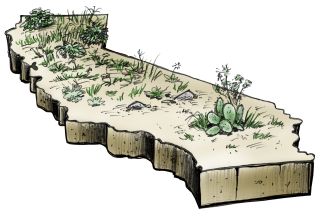PROJECTED WATER DEMAND
- Share via
As Orange County continues to grow, so will its appetite for that most basic of commodities: water. And if drought conditions persist, that demand will, naturally, increase. Here’s a look at how a growing population will affect water demand:
% Increase From Estimated *Municipal/ Previous Year Population *Agriculture Industry *Total Year NORMAL YEAR 1990 2,306,700 50 525 575 -- 1995 2,469,400 45 460 605 5.2 2000 2,676,900 40 585 625 3.3 2005 2,722,650 30 610 640 2.4 2010 2,831,100 35 635 670 4.7 DRY YEAR 1990 2,306,700 60 580 640 -- 1995 2,469,400 60 615 675 5.5 2000 2,676,900 60 640 700 3.7 2005 2,722,650 55 670 725 3.6 2010 2,831,100 50 700 750 3.4
* Thousands of acre feet; an acre foot is the amount of water it would take to cover an acre of ground to a depth of one foot.
25 WAYS TO SAVE WATER
IN THE BATHROOM: 1. Take shorter showers. 2. Install water-saving shower heads or flow restrictors. 3. Take baths. A partially-filled tub uses less water than all but the shortest showers. 4. Turn off the faucet while brushing your teeth. Instead, fill a glass with water for rinsing. 5. Check faucets and pipes for leaks. 6. Turn off water while shaving. Fill the bottom of the sink with a few inches of warm water in which to rinse your razor. 7. Check toilet for leaks. 8. Don’t use toilet as an ashtray or wastebasket. 9. Put a plastic bottle in the toilet tank. Putting gravel in the bottom of a quart bottle filled with water will save water without reducing efficiency.
IN KITCHEN AND LAUNDRY AREAS: 10. Use dishwasher only for full loads. 11. Use washing machine only for full loads. 12. Don’t run the faucet while cleaning vegetables. Rinse them in a sink of clean water instead. 13. Keep a bottle of drinking water in the refrigerator. It is less wasteful than running tap water to cool it for drinking. 14. If you wash dishes by hand, don’t run water for rinsing. If you have two sinks, fill one with rinse water. If you have one sink, rinse washed dishes in a rack, all at once. 15. Check faucets and pipes for leaks.
OUTSIDE: (For single-family residences, about 50% of water used is outdoors. Landscape techniques can save half of that. 16. Water your lawn only when it needs it. 17. Deep-soak your lawn. A light sprinkling just sits on the surface, evaporates and is wasted. 18. Water during cool parts of the day. Early morning is better than dusk; it helps to prevent growth of fungus. 19. Don’t water the pavement. Position sprinklers so they cover plants, not paved areas. Use a broom, not a hose, to clean driveways and sidewalks. 20. Avoid watering on windy days. 21. Plant drought-resistant trees and plants. 22. Put a layer of mulch around trees and plants. This slows evaporation. 23. Don’t run the hose while washing your car. Wash it with a pail of soapy water and use a hose only to rinse it. 24. Ask children not to play with the hose and sprinklers. 25. Check for leaks in pipes, hoses, faucets and couplings. Leaks outside the house can be extremely wasteful. To check for hidden leaks, shut off all faucets for 15 minutes. If your water meter still shows movement, you have a leak.
Source: Water Advisory Committee of Orange County; Southern California Water Committee, Inc.
More to Read
Sign up for Essential California
The most important California stories and recommendations in your inbox every morning.
You may occasionally receive promotional content from the Los Angeles Times.













